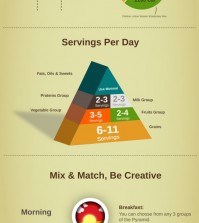- Make It Yourself Lavender Heart-Shaped Bath Bombs!
- 20 Things You Never Knew About “Down There”
- 12 Best Foods For Those Suffering From Arthritis Pain
- 12 Personal Hygiene Mistakes Almost Everyone Makes (Mom Never Told You About #4!)
- 15 Medicinal Plants And Herbs From The Cherokee People
- 12 Mind-Blowing Benefits Of Drinking Coconut Water During Pregnancy
- 12 Outstanding Winter Foods That Won’t Fatten You Up Like A Christmas Turkey
How To Boost Your Child’s Memory
Why memory is so important?
For a child, memory is a vital part of building a good foundation of learning in the home, in the classroom, and beyond both places. A good memory can help your child do better in school, do well on tests, and achieve higher grades. And that’s just the start.
Great, sharp memory skills do not come naturally. It is a skill which kids need to learn and practise often since memory skills develop and improve the more they are put into practice.
If you want your child to reach an optimal level of mastering his or her memory functions, it is important to make sure that your child knows how to flex ‘memory muscles’ on a regular basis.
You can help your child, or children, improve this leading function by adding some memory boosters into their daily lives.
Two important types of memory functions
There are two basic kinds of the working memory function, auditory memory and visual-spatial memory. Auditory memory records are what you are hearing, while visual-spatial captures is what you are seeing.
The difference between the two is that auditory memory isn’t just stored for later use. It needs to be assessed and used immediately, whereas visual-spatial memory can be saved for later use when needed.
If your child is busy with a task, gets interrupted, and forgets that he needs to return to the task at hand, then he might have working memory issues.
Visual-spatial memories help kids to figure out which way the sheet fits onto the bed, and to reason about spatial properties from words like over and under, triangle and rectangle, or small and big.
If the child seems unable to identify the differences, there may be some visual memory issues.
Continue to Page 2

































